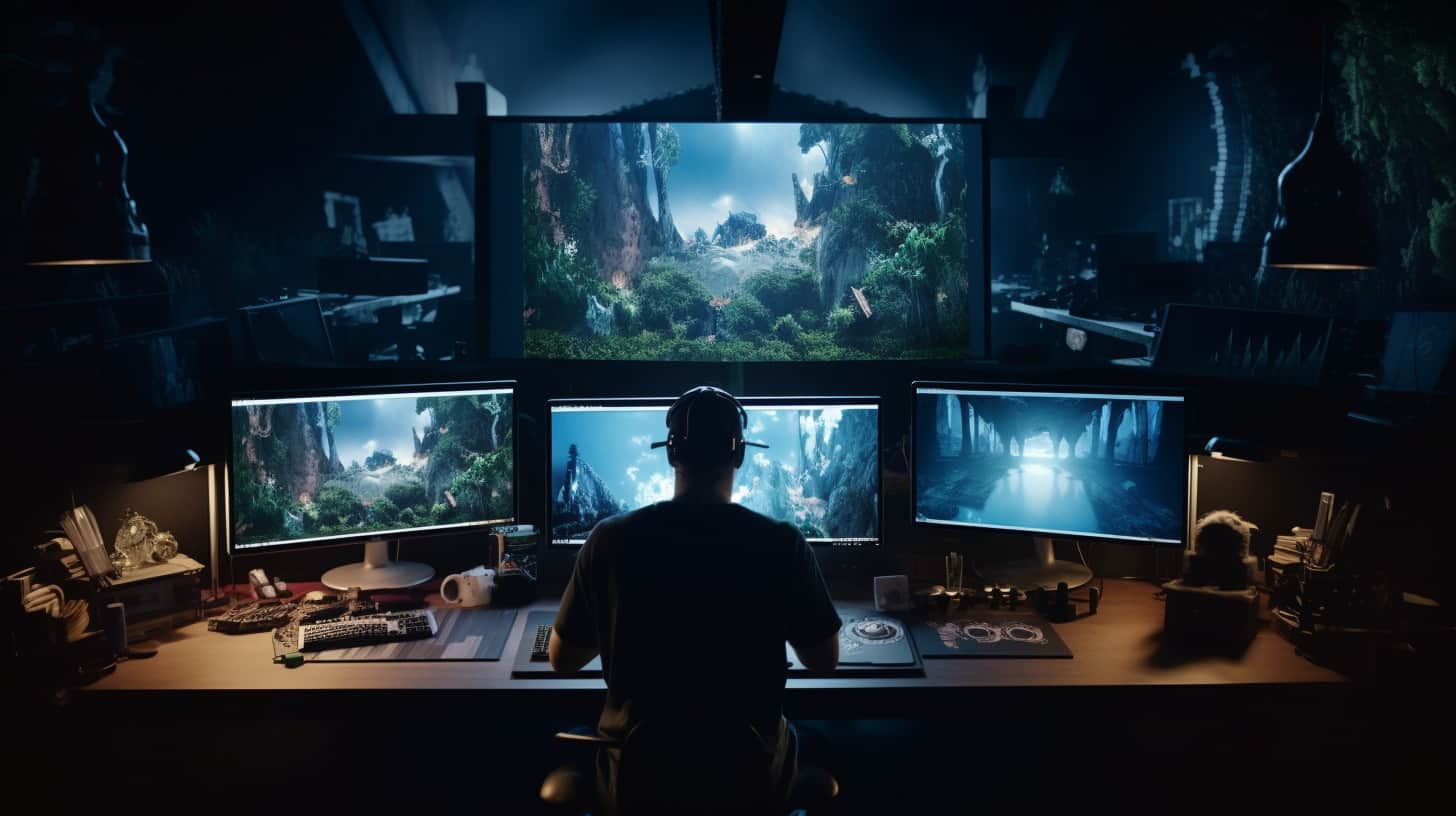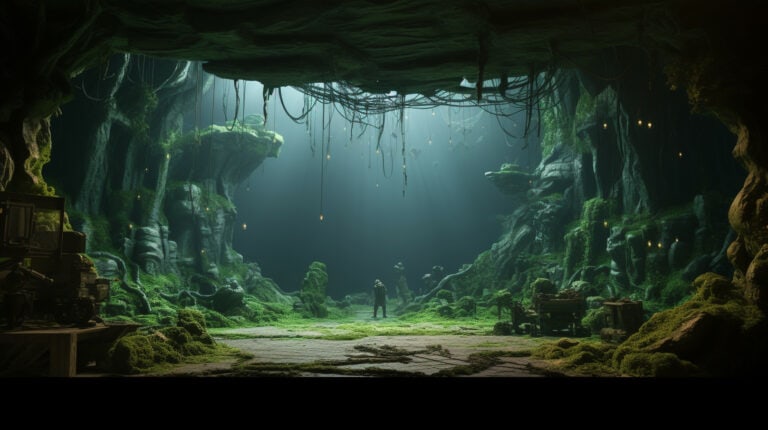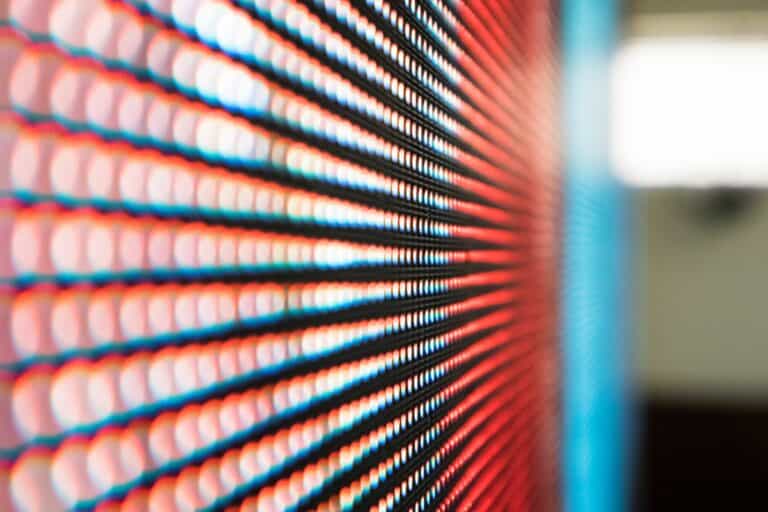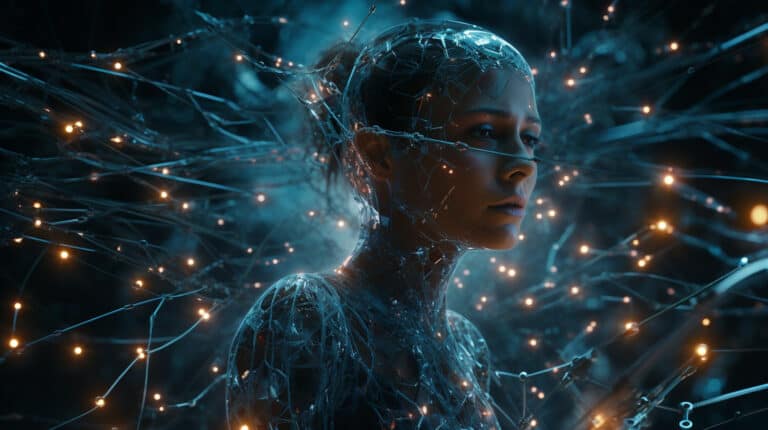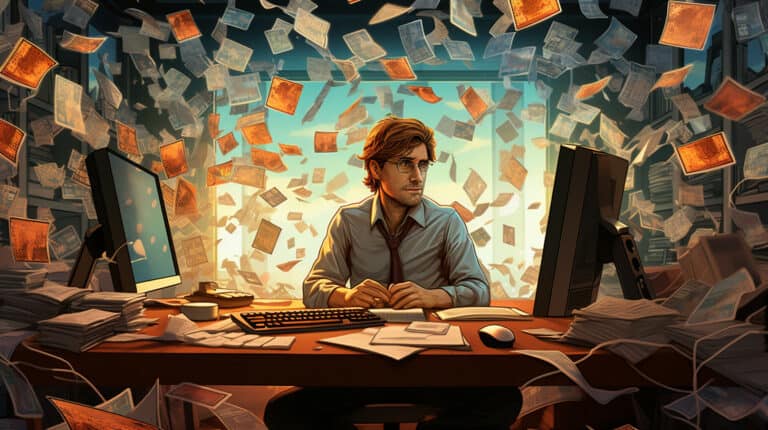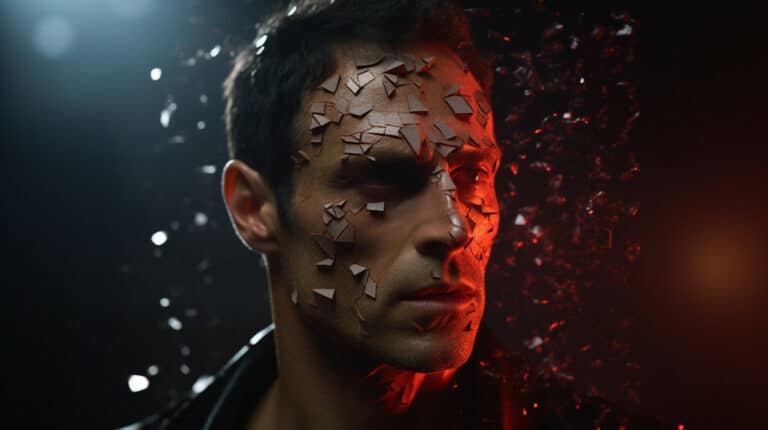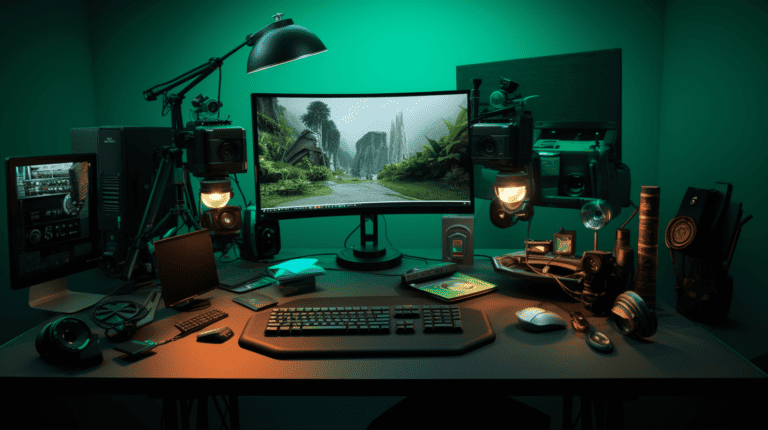A Deep Dive Into Visual Effects and Editing for Modern Media
Are you ready to dive deep into the captivating world of visual effects and editing for modern media?
Get ready to be amazed as we explore the evolution, the role, and the impact of these powerful storytelling tools.
Discover the fascinating techniques and collaboration between visual effects artists and editors that bring your favorite movies and shows to life.
Join us on this insightful journey and unlock the secrets behind iconic visual effects and editing.
Let’s embark on this adventure together!
Key Points:
- Visual effects and editing play a crucial role in enhancing storytelling by creating atmosphere, conveying deeper meanings, manipulating time, and immersing the audience in the narrative.
- Collaboration between visual effects artists and editors is essential for effective communication and a vital creative synergy in modern media production.
- Cutting-edge tools and techniques, such as Adobe Creative Cloud, Autodesk Maya, Blackmagic Design DaVinci Resolve, and NVIDIA GPUs, elevate visual effects and editing skills.
- The impact and implications of visual effects and editing go beyond entertainment, as they shape audience perception, reflect cultural and societal norms, and raise ethical dilemmas.
Introduction
In this introduction, you’ll gain a comprehensive understanding of the fascinating world of visual effects and editing in modern media.
From the explosive action scenes in superhero movies to the seamless integration of CGI in fantasy epics, visual effects have become an integral part of our entertainment experience. Whether it’s enhancing the realism of a scene or creating fantastical worlds, visual effects have the power to transport us to new dimensions.
In addition, editing plays a crucial role in shaping the narrative and pacing of a film or television show. It’s the art of seamlessly combining different shots, manipulating time and space, and creating a cohesive and engaging story.
As we delve into the evolution of visual effects and editing in contemporary media, you’ll discover the innovative techniques and technologies that have revolutionized this field.
Evolution of Visual Effects and Editing in Contemporary Media
Get ready to take a journey through the evolution of visual effects and editing in contemporary media.
From the early days of practical effects in film and television to the emergence of digital editing techniques, the industry has come a long way.
But perhaps the most significant game-changer has been the introduction of CGI, which has revolutionized the way visual effects are created and integrated into modern media.
Hang on tight as we explore the fascinating history and impact of these advancements in the world of visual effects and editing.
Historical Overview of Visual Effects in Film and Television
Explore the fascinating evolution of visual effects and editing in film and television, tracing its historical development and impact on contemporary media.
Witness the birth of visual effects in the late 19th century, when filmmakers experimented with stop-motion animation and matte paintings.
Dive into the golden age of Hollywood, where the likes of George Méliès and Ray Harryhausen pushed the boundaries of what was possible on screen.
Marvel at the groundbreaking achievements of the 1970s and 1980s, with the advent of computer-generated imagery (CGI) and the birth of digital editing.
Fast forward to today’s era of seamless integration, where visual effects have become an integral part of storytelling, enhancing the cinematic experience like never before.
From humble beginnings to mind-boggling advancements, the historical journey of visual effects and editing is a testament to human creativity and technological innovation, forever changing the way we consume media.
Emergence of Digital Editing Techniques
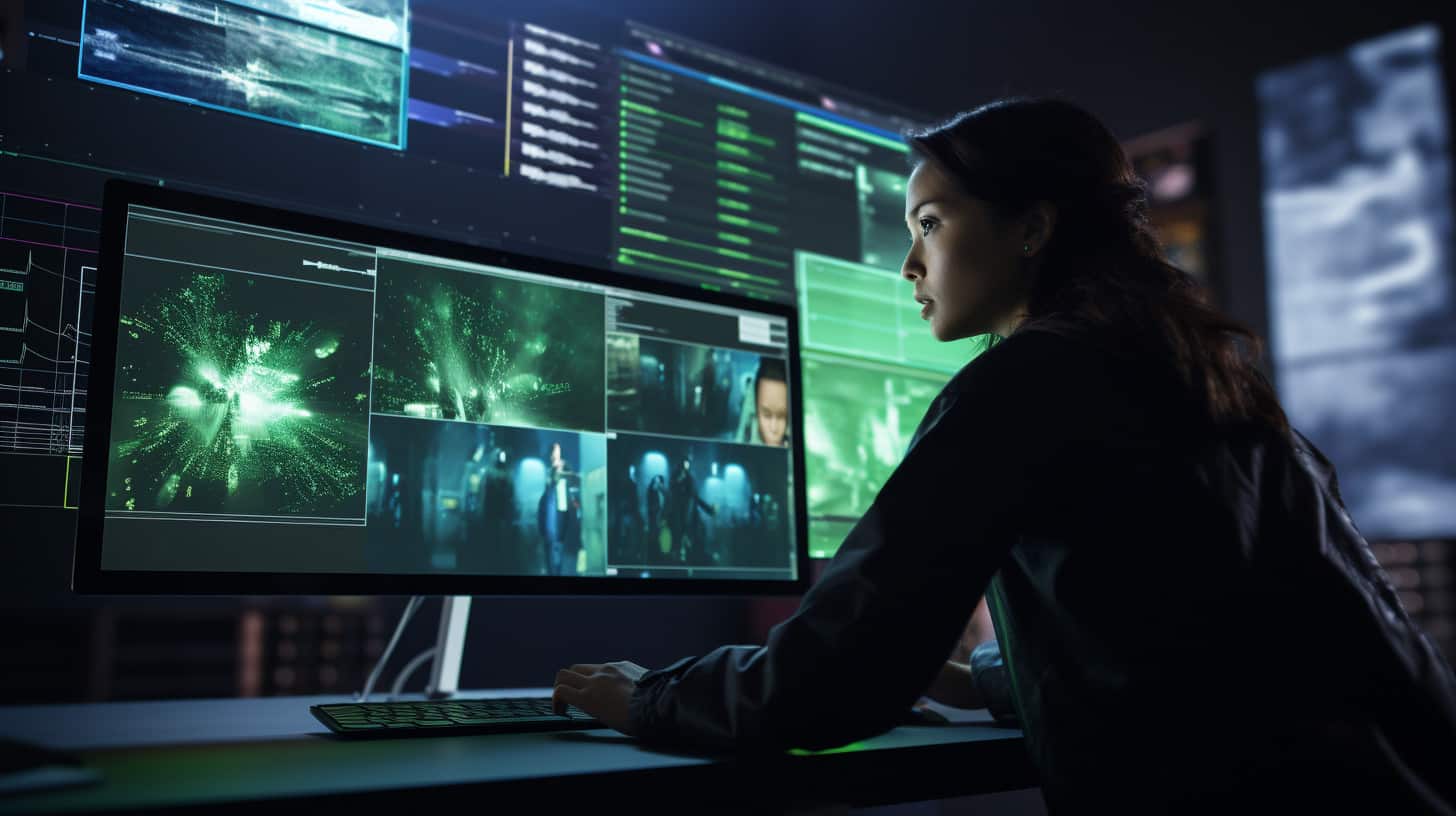
Take a journey into the emergence of digital editing techniques, revolutionizing the world of visual effects and editing in contemporary media. In today’s digital age, filmmakers and editors have access to a wide range of powerful tools that allow them to manipulate footage and create stunning visual effects like never before. With the advent of digital editing software, the process of editing has become faster, more precise, and incredibly versatile. Gone are the days of physically splicing film together; now, everything can be done digitally, giving editors unprecedented control over the final product. To illustrate the impact of digital editing techniques, consider this table:
| Traditional Editing | Digital Editing |
|---|---|
| Time-consuming | Time-efficient |
| Limited options | Endless possibilities |
| Manual labor | Streamlined workflow |
| Tedious revisions | Easy experimentation |
As you can see, digital editing techniques have transformed the editing process, allowing for greater creativity and efficiency. But how has this technology affected visual effects? Let’s explore the impact of CGI in the next section.
Impact of CGI on Visual Effects
Now, let’s delve into how CGI has revolutionized visual effects and editing in contemporary media.
- Seamless Integration: CGI allows for the seamless integration of computer-generated elements with live-action footage, creating a realistic and immersive visual experience.
- Unlimited Creativity: With CGI, the possibilities are endless. From creating fantastical creatures to breathtaking environments, filmmakers can bring their wildest imaginations to life on the screen.
- Cost Efficiency: CGI has significantly reduced production costs by eliminating the need for expensive practical effects. Filmmakers can now achieve visually stunning results without breaking the bank.
- Time-saving: In the past, visual effects required extensive time-consuming processes. However, with CGI, filmmakers can now achieve complex effects more efficiently, saving valuable production time.
CGI has truly transformed the way visual effects are created and has opened up a world of possibilities for filmmakers. With its seamless integration, limitless creativity, cost efficiency, and time-saving capabilities, CGI has become an indispensable tool in the modern media industry.
The Role of Visual Effects and Editing in Storytelling
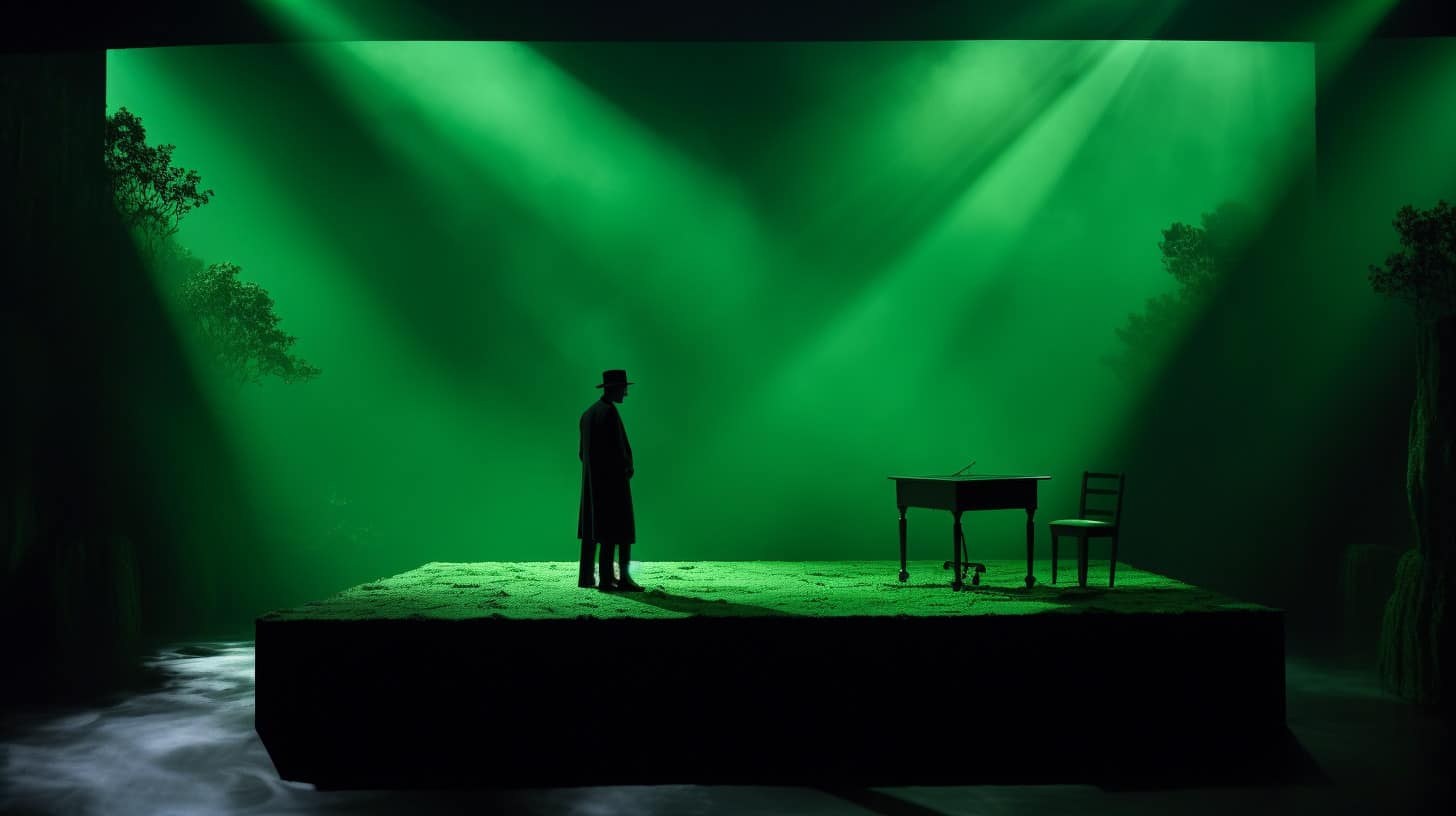
You may not realize it, but visual effects and editing play a crucial role in the art of storytelling.
Through the use of visual effects, filmmakers can enhance the narrative and transport you to new worlds.
Editing, on the other hand, sets the pace and rhythm of the story, keeping you engaged and invested in the journey.
Together, these elements have the power to create emotional impact and elevate the storytelling experience to new heights.
Enhancing Narrative through Visual Effects
One crucial aspect of enhancing narrative through visual effects and editing is the strategic use of visual elements to convey meaning and evoke emotions. By skillfully incorporating visual effects, editors can enhance the storytelling experience and immerse the audience in a captivating narrative.
Here are four key ways visual effects and editing can enhance narrative:
- Creating atmosphere: Visual effects can set the tone and mood of a scene, creating an immersive atmosphere that enhances the story’s emotional impact.
- Visual symbolism: By using symbolic imagery, visual effects can convey deeper meanings and subtext, enriching the narrative and allowing for thought-provoking interpretations.
- Time manipulation: Through editing techniques and visual effects, time can be compressed or expanded, allowing for creative storytelling and emphasizing pivotal moments.
- Enhancing storytelling: Visual effects can seamlessly blend real and imagined worlds, transporting the audience into the story and enhancing the narrative’s impact.
Importance of Editing in Pacing and Rhythm
Continuing the exploration into the role of visual effects and editing in storytelling, let’s delve into the significance of editing in pacing and rhythm.
Editing is a powerful tool that can make or break the flow of a story, capturing the audience’s attention and guiding their emotional journey. Through strategic cuts, transitions, and sequences, editing controls the rhythm and pace of a scene, enhancing its impact and intensifying the storytelling experience.
It allows the audience to immerse themselves in the narrative, creating tension, suspense, or excitement. The art of editing lies in finding the perfect balance between timing and storytelling, ensuring that every shot serves a purpose and contributes to the overall rhythm of the film.
Creating Emotional Impact through Visual Effects and Editing
Delve deeper into the role of visual effects and editing in storytelling by exploring how they create emotional impact.
Visual effects and editing are much more than just technical tools; they have the power to evoke strong emotions and leave a lasting impression on the audience.
Here are four ways in which visual effects and editing can create emotional impact:
- Enhancing the atmosphere: Through the use of color grading, lighting effects, and sound design, visual effects and editing can create a specific mood and atmosphere that resonates with the audience.
- Building tension and suspense: By manipulating the pace, timing, and sequence of shots, visual effects and editing can build anticipation and keep the audience on the edge of their seats.
- Conveying character emotions: Subtle visual effects and editing techniques can effectively convey the emotions and inner thoughts of characters, allowing the audience to empathize and connect with them on a deeper level.
- Creating visual metaphors: Visual effects and editing can be used to create powerful visual metaphors that symbolize abstract concepts or emotions, adding depth and layers to the storytelling.
Through skillful use of visual effects and editing, filmmakers can tap into the audience’s emotions, creating a truly immersive and impactful storytelling experience.
Tools and Techniques in Visual Effects and Editing
Ready to explore the fascinating world of visual effects and editing tools and techniques?
From powerful software and hardware for visual effects to popular editing software and techniques, there’s a wide array of tools at your disposal to enhance your storytelling.
Additionally, specialized tools for visual effects can take your projects to a whole new level of creativity and innovation.
Let’s dive in and uncover the possibilities!
Software and Hardware for Visual Effects
To maximize your creative potential in visual effects and editing, it’s essential to have access to cutting-edge software and hardware that enable seamless integration of tools and techniques. Here are some must-have software and hardware options to elevate your work:
- Adobe Creative Cloud: A comprehensive suite of tools, including After Effects and Premiere Pro, that provide a wide range of visual effects and editing capabilities.
- Autodesk Maya: A powerful 3D animation software that allows you to create stunning visual effects and realistic simulations.
- Blackmagic Design DaVinci Resolve: A popular color grading and editing software that offers advanced features for professional-grade visual effects.
- NVIDIA GPUs: These high-performance graphics processing units are crucial for rendering complex visual effects in real-time.
With these cutting-edge tools and hardware at your disposal, you can take your visual effects and editing skills to the next level.
Now, let’s explore some of the popular editing software and techniques that can further enhance your projects.
Popular Editing Software and Techniques
One essential editing technique to enhance your visual effects projects is utilizing color grading software. Color grading allows you to manipulate the colors and tones in your footage, giving it a distinct look and feel. There are several popular editing software options available that offer powerful color grading capabilities. Here are a few examples:
| Software | Description | Price |
|---|---|---|
| Adobe Premiere Pro | A professional video editing software with advanced color grading tools. | Subscription-based |
| DaVinci Resolve | A comprehensive editing software with industry-leading color grading capabilities. | Free (with paid version available) |
| Final Cut Pro | An Apple-exclusive software known for its intuitive interface and extensive color grading options. | One-time purchase |
Specialized Tools for Visual Effects
As you continue exploring the world of visual effects and editing, it’s important to familiarize yourself with specialized tools and techniques that can elevate your projects to new heights. These tools are designed to help you bring your creative vision to life and achieve stunning visual effects.
Here are four specialized tools that are essential for any visual effects artist or editor:
- Motion Tracking Software: This tool allows you to track the movement of objects in your footage, enabling you to add or remove elements seamlessly.
- 3D Modeling Software: With this tool, you can create realistic 3D models and animations that blend seamlessly with your live-action footage.
- Particle Simulators: These tools allow you to create realistic simulations of particles, such as fire, smoke, or water, adding depth and realism to your visual effects.
- Compositing Software: This tool enables you to combine different elements, such as live-action footage, 3D models, and visual effects, into a cohesive final image.
Collaboration between Visual Effects Artists and Editors
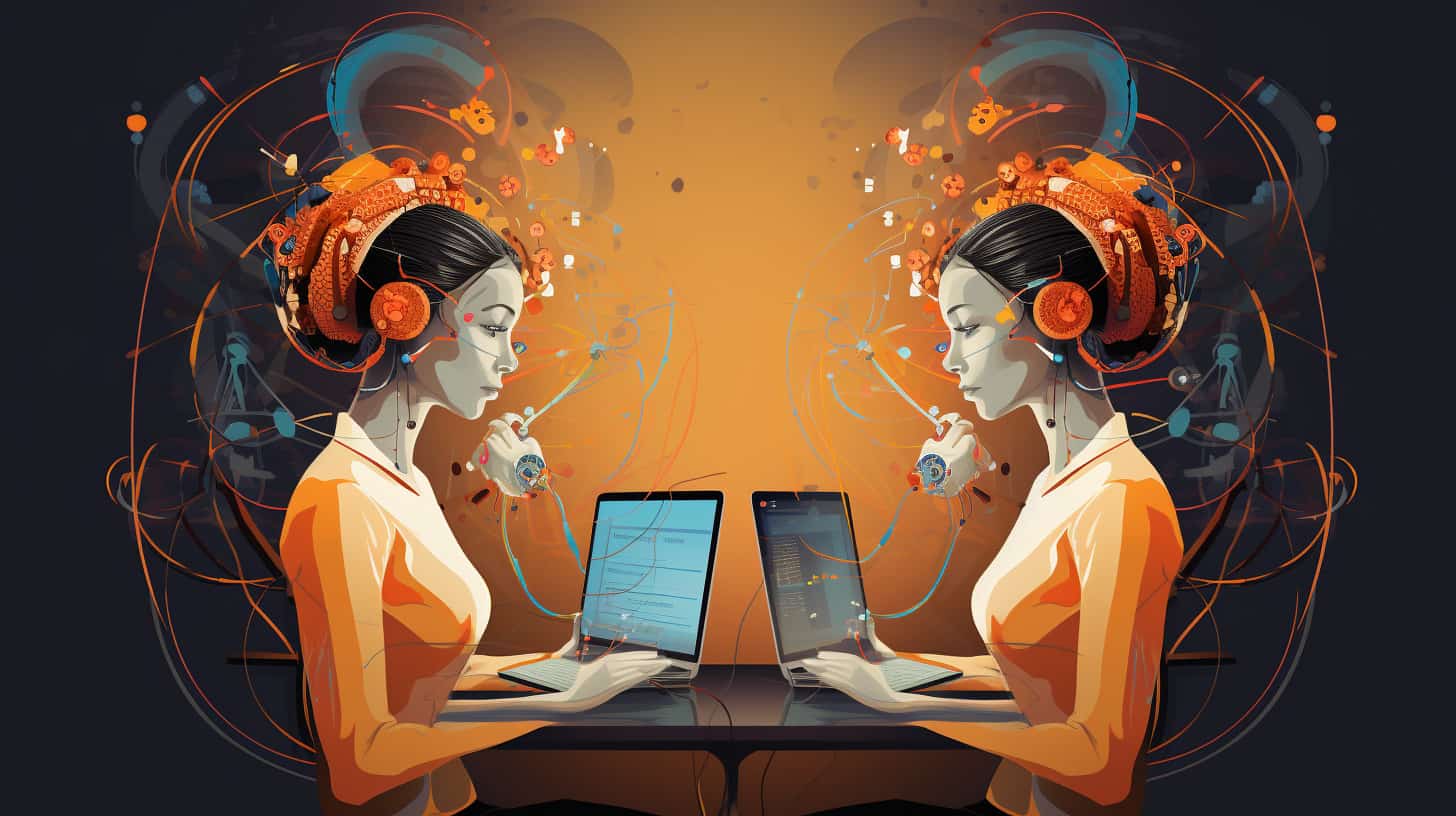
Are you ready to explore the dynamic collaboration between visual effects artists and editors?
This crucial partnership relies on effective communication and a streamlined workflow between the two departments.
In this discussion, we’ll examine the challenges faced by VFX artists and editors when working together, as well as the innovative solutions that have been developed to enhance their collaborative efforts.
Additionally, we’ll delve into compelling case studies that showcase successful collaborations and highlight the importance of this creative synergy in modern media production.
Communication and Workflow between VFX and Editing Departments
To ensure seamless collaboration between visual effects artists and editors, establish clear communication and streamlined workflows. Here are four key points to consider:
- Regular Meetings: Schedule regular meetings between the VFX and editing departments to discuss project updates, challenges, and creative ideas. This will foster a collaborative environment and ensure everyone is on the same page.
- Shared Project Files: Utilize a shared file system or cloud-based platform to share project files between the VFX and editing departments. This allows for real-time updates and easy access to the latest versions of files.
- Open Communication Channels: Encourage open and transparent communication between the VFX and editing departments. This includes providing feedback, asking questions, and addressing any concerns promptly.
- Clearly Defined Roles: Clearly define the roles and responsibilities of each team member within the VFX and editing departments. This will prevent confusion and ensure that tasks are delegated efficiently.
Challenges and Solutions in Collaborative Work
To overcome the challenges in collaborative work between visual effects artists and editors, establish efficient communication channels and streamline workflows.
The key to successful collaboration lies in clear and effective communication. Visual effects artists and editors must be able to exchange ideas, feedback, and revisions seamlessly. By implementing communication tools such as project management software, instant messaging platforms, and regular team meetings, you can ensure that everyone is on the same page and working towards the same goal.
Additionally, streamlining workflows is essential to maintaining a smooth and efficient collaborative process. This can be achieved by establishing clear roles and responsibilities, implementing standardized file naming conventions, and utilizing collaborative software that allows for real-time updates and version control.
Case Studies of Successful Collaboration
Let’s explore real-life examples of successful collaboration between visual effects artists and editors in the context of creating stunning and immersive visual experiences. Here are some remarkable case studies that highlight the power of their collaboration:
- ‘Inception’ – The seamless integration of practical effects and computer-generated imagery (CGI) brought director Christopher Nolan’s vision to life, captivating audiences with mind-bending visuals and a gripping narrative.
- ‘Blade Runner 2049’ – The combination of practical effects and meticulous digital enhancements created a visually stunning dystopian world, showcasing the expertise of visual effects artists and the editing finesse required to maintain the film’s atmospheric tone.
- ‘Game of Thrones’ – The collaboration between visual effects artists and editors in this epic TV series resulted in breathtaking battle sequences, fantastical creatures, and expansive landscapes, elevating the storytelling to new heights.
- ‘The Matrix’ – The groundbreaking visual effects, seamlessly integrated with the editing, created a world that blurred the lines between reality and simulation, leaving audiences questioning their own perceptions.
These case studies illustrate the successful collaboration between visual effects artists and editors in creating visually captivating and immersive experiences.
Now, let’s delve into how visual effects and editing differ in various media formats.
Visual Effects and Editing in Different Media Formats
Now let’s explore how visual effects and editing techniques vary across different media formats.
In film production, visual effects play a crucial role in creating immersive experiences and enhancing the storytelling.
On the other hand, television shows require editing techniques that can maintain a fast-paced narrative while effectively integrating visual effects.
And in the realm of video games, visual effects aren’t just for aesthetics, but also serve as interactive elements that enhance gameplay and create realistic virtual worlds.
Understanding the unique requirements and approaches in each media format is essential for visual effects artists and editors to deliver impactful and seamless storytelling experiences.
Visual Effects in Film Production
As you delve into the world of visual effects and editing in film production, you’ll discover the various ways in which visual effects are utilized across different media formats. In the realm of film production, visual effects play a crucial role in creating stunning and immersive cinematic experiences.
Here are some key aspects to consider:
- Seamless Integration: Visual effects should seamlessly blend with the live-action footage, creating a cohesive and believable world.
- Enhancing Realism: From creating realistic explosions to bringing fantastical creatures to life, visual effects enhance the realism of the story and transport the audience into another realm.
- Pushing Boundaries: Visual effects allow filmmakers to push the boundaries of what’s possible, bringing to life concepts and scenarios that would be otherwise impossible to film.
- Storytelling Tools: Visual effects are powerful storytelling tools, aiding in character development, setting the mood, and evoking emotions.
Understanding the role of visual effects in film production is essential for aspiring filmmakers and enthusiasts alike.
Editing Techniques for Television Shows
As you explore the world of visual effects and editing in different media formats, it is important to understand the unique editing techniques employed in television shows. Television editing requires a specific set of skills and strategies to effectively tell a story within a limited time frame. Here are some key editing techniques commonly used in television shows:
| Technique | Description |
|---|---|
| Montage | A sequence of quick shots that condenses time or conveys a series of events. |
| Jump Cut | A sudden transition between shots of the same subject, creating a jarring effect. |
| Split Screen | Dividing the screen into multiple frames to show different perspectives simultaneously. |
| Flashback/Flashforward | A technique that transports the viewer to a past or future moment to provide context or build suspense. |
| Cross Cutting | Alternating between two or more storylines to create tension or parallel narratives. |
These techniques, when used effectively, enhance the storytelling experience and engage the audience in a dynamic and captivating way. By understanding these editing techniques, you can better appreciate the craft behind television shows and gain insights into the art of visual storytelling.
Visual Effects in Video Games
To continue exploring visual effects and editing in different media formats, let’s dive into the fascinating world of visual effects in video games.
Here are four reasons why visual effects in video games are changing the game:
- Immersive Environments: Visual effects in video games create stunningly realistic worlds that draw you in like never before.
- Epic Battles: From explosive explosions to jaw-dropping spells, visual effects enhance the intensity of epic battles, making you feel like a true hero.
- Dynamic Characters: Visual effects bring characters to life, adding depth and emotion to their every move, making them more relatable and engaging.
- Interactive Gameplay: Visual effects in video games allow for interactive experiences, where your actions directly affect the world around you, making every choice feel consequential.
As we explore the future of visual effects and editing, it’s clear that video games will continue to push the boundaries of what’s possible, creating even more immersive and awe-inspiring experiences.
The Future of Visual Effects and Editing
Get ready to be amazed by the future of visual effects and editing! Advancements in technology have revolutionized the way we create and manipulate visuals, opening up new possibilities and pushing the boundaries of creativity.
Virtual reality and augmented reality are poised to transform the editing and VFX landscape, allowing for immersive storytelling experiences like never before.
However, as we embrace these exciting developments, it’s crucial to consider the ethical implications of using visual effects and editing to alter reality and manipulate the truth.
Advancements in Technology and its Impact on Visual Effects
With the rapid advancements in technology, you’ll witness a significant impact on visual effects, shaping the future of visual effects and editing in modern media. The possibilities are endless, and the boundaries of creativity are constantly being pushed.
Here are some exciting developments to look forward to:
- Real-time rendering: Imagine being able to see the final result of your visual effects work instantly, without the need for time-consuming rendering processes.
- Artificial intelligence: AI is revolutionizing the way visual effects are created. From automated rotoscoping to deep learning algorithms that enhance and refine images, AI is becoming an essential tool for visual effects artists.
- Virtual reality: VR isn’t just for gaming anymore. It’s opening up new avenues for immersive storytelling and mind-bending visual effects experiences.
- Augmented reality: AR is blurring the lines between the real world and the virtual world, allowing for seamless integration of virtual objects into our everyday lives.
The future of visual effects and editing is undoubtedly exciting, and technology is the driving force behind it all. Get ready to be amazed by what’s to come!
Virtual Reality and Augmented Reality in Editing and VFX
Immerse yourself in the future of visual effects and editing with virtual reality (VR) and augmented reality (AR).
These emerging technologies are revolutionizing the way we create and consume media. With VR, you can step into a whole new world, exploring breathtaking landscapes or interacting with virtual objects.
AR, on the other hand, enhances our reality by overlaying digital information onto the real world. Imagine seeing holograms or data visualizations right in front of you.
In the realm of editing and VFX, VR and AR offer exciting possibilities. Editors can now immerse themselves in a virtual editing suite, manipulating footage in a three-dimensional space. VFX artists can easily integrate virtual elements into real-world scenes, creating seamless and mind-bending visual effects.
The future of visual effects and editing is here, and it’s virtual.
Ethical Considerations in Visual Effects and Editing
Consider the ethical implications of visual effects and editing as the future of this industry unfolds. In a world where technology allows us to manipulate reality, it’s crucial to reflect on the ethical considerations that arise. Here are four thought-provoking points to ponder:
- Manipulation of Truth: As visual effects and editing become more advanced, the line between fact and fiction becomes blurred. How will this impact our perception of reality?
- Authenticity and Trust: With the ability to alter images and videos, how can we ensure the authenticity of media? How can we maintain trust between creators and audiences?
- Portrayal of Identity: Visual effects and editing provide opportunities to alter appearances and portrayals of individuals. How does this impact concepts of identity and representation?
- Cultural and Social Impact: The choices made in visual effects and editing can perpetuate stereotypes or challenge societal norms. How can we navigate these sensitive waters responsibly?
As we delve into the impact of visual effects and editing on audience perception, it’s essential to consider these ethical dilemmas and their potential implications for society.
Impact of Visual Effects and Editing on Audience Perception
As a viewer, you may not realize the profound psychological effects that visual effects can have on your perception of a film or TV show. From the use of color grading to create specific moods, to the manipulation of time through editing techniques, these visual elements play a crucial role in shaping your emotional response and overall engagement with the content.
Additionally, the influence of editing can’t be underestimated, as it has the power to captivate and hold your attention or leave you feeling disconnected and disinterested.
Furthermore, visual effects and editing aren’t just technical aspects of filmmaking, but they also reflect and shape cultural and societal norms, influencing how stories are told and what’s considered visually appealing or acceptable.
Psychological Effects of Visual Effects on Viewers
You’ll experience a profound impact on your perception as visual effects and editing techniques immerse you in a world of cinematic illusions. The psychological effects of visual effects on viewers are far-reaching and can profoundly influence how we interpret and engage with the content we consume.
Here are four key ways visual effects and editing impact audience perception:
- Suspension of disbelief: Visual effects can transport us to fantastical worlds and suspend our skepticism, allowing us to fully immerse ourselves in the story.
- Emotional manipulation: Through the use of visual effects and editing techniques, filmmakers can evoke specific emotions, heightening the impact of a scene and leaving a lasting impression.
- Enhanced storytelling: Visual effects and editing can enhance the narrative by creating visual metaphors, symbolism, and subliminal messages that add depth and layers to the story.
- Altered reality: Visual effects have the power to distort reality, challenging our perceptions and expanding our imagination beyond the constraints of the real world.
Influence of Editing on Audience Engagement
The editing techniques’ influence on audience engagement can be seen through the impact of visual effects and editing on their perception. When you watch a movie or a TV show, the way it’s edited and the visual effects used can greatly affect how you perceive the story and characters.
The pacing of the editing can create tension, excitement, or even boredom. The use of visual effects can transport you to different worlds, make you believe in fantastical creatures, or immerse you in the action.
The choices made in the editing room can manipulate your emotions, guide your attention, and shape your overall experience. It’s through these techniques that filmmakers have the power to engage and captivate audiences, leaving a lasting impression on their perception of the story being told.
Cultural and Societal Implications of Visual Effects and Editing
To truly understand the cultural and societal implications of visual effects and editing, it’s essential that you frequently analyze their impact on audience perception. Visual effects and editing have the power to shape how we perceive characters, events, and even entire worlds.
Here are four key ways in which these techniques influence audience perception:
- Emotional manipulation: Visual effects and editing can evoke specific emotions, intensifying the audience’s connection to the story.
- Reality distortion: Through clever editing and visual effects, filmmakers can create a distorted version of reality, challenging our perceptions and forcing us to question what’s real.
- Cultural representation: Visual effects and editing can either reinforce or challenge cultural stereotypes, influencing how different groups are portrayed and perceived.
- Suspension of disbelief: Effective visual effects and seamless editing can transport audiences into fantastical worlds, allowing them to momentarily suspend disbelief and fully immerse themselves in the story.
Challenges and Limitations in Visual Effects and Editing
Are you ready to confront the challenges and limitations that come with visual effects and editing?
Budgetary constraints often force filmmakers to make difficult choices and find creative solutions within limited resources.
Additionally, technical limitations and the pursuit of realism can sometimes hinder the full realization of artistic vision.
Striking a balance between artistic integrity and commercial demands is a constant struggle in the world of visual effects and editing.
Budgetary Constraints in VFX and Editing
Budgetary constraints can significantly impact the creative process of visual effects and editing in modern media. When it comes to bringing visual effects to life and crafting seamless edits, limited budgets can pose challenges and limitations that need to be navigated.
Here are four ways in which budgetary constraints impact VFX and editing:
- Reduced access to cutting-edge technology and software
- Limited time and resources for experimentation and exploration
- Constraints on hiring top talent and experienced professionals
- Compromises on the quality and complexity of visual effects and editing techniques
Navigating these budgetary limitations requires creativity, resourcefulness, and strategic decision-making. It pushes filmmakers and editors to think outside the box and find innovative solutions to achieve their desired results.
Despite the challenges, budgetary constraints can also foster ingenuity and inspire new approaches to visual effects and editing in modern media.
Technical Limitations and Realism in Visual Effects
When navigating the challenges and limitations of visual effects and editing, it is crucial to consider the technical constraints and strive for realism in modern media. The advancement of technology in the field of visual effects has allowed for incredible possibilities, but it also comes with its fair share of limitations. These technical constraints can pose challenges in achieving a high level of realism in visual effects. From the limitations of computer processing power to the constraints of software capabilities, there are various factors that can impact the final result. Additionally, the need for realism requires careful attention to detail and meticulous editing techniques. Ensuring that the visual effects seamlessly blend with the live-action footage requires skill and precision. By understanding and working around these technical limitations, filmmakers can create visually stunning and realistic experiences for their audience.
| Technical Limitations | Challenges | Solutions |
|---|---|---|
| Limited processing power | Slows down rendering times and hinders complex effects | Optimize code and utilize distributed rendering |
| Software capabilities | May not have all the tools required for desired effects | Explore alternative software or develop custom tools |
| Realism and detail | Requires meticulous attention to detail and precise editing techniques | Use reference materials and collaborate with experts in the field |
| Hardware constraints | Limited by the capabilities of the computers and equipment being used | Invest in high-performance hardware or utilize cloud computing resources |
Balancing Artistic Vision with Commercial Demands
To balance artistic vision with commercial demands in visual effects and editing, you must carefully consider the constraints and challenges that arise in the process. It’s a delicate dance, navigating between pleasing your creative instincts and meeting the expectations of the market. Here are a few key points to ponder:
- Budget limitations: Money talks, and sometimes it screams. You need to make your artistic vision fit within the financial constraints of the project.
- Time constraints: Deadlines are the grim reaper of creativity. Balancing quality and efficiency is a constant struggle.
- Client demands: The customer is always right, or so they say. Sometimes, you have to compromise your artistic vision to satisfy the client’s desires.
- Technical limitations: Technology can be both a blessing and a curse. Knowing the limits of what can be achieved is crucial in balancing art and commerce.
Finding the harmony between artistic expression and commercial success is a tightrope act that requires skill, finesse, and a touch of compromise.
Case Studies of Iconic Visual Effects and Editing
Get ready to explore some of the most groundbreaking visual effects and innovative editing techniques in film history.
From the awe-inspiring dinosaurs of ‘Jurassic Park’ to the non-linear storytelling of ‘Pulp Fiction’ and the immersive world of ‘Avatar’, these case studies will take you on a journey through the evolution of visual effects and editing in modern media.
Prepare to be amazed by the creativity, technical prowess, and lasting impact of these iconic works.
Groundbreaking Visual Effects in “Jurassic Park
Explore the innovative techniques employed in ‘Jurassic Park’ to achieve groundbreaking visual effects and editing.
- Realistic Animatronics: The use of animatronic dinosaurs brought a level of realism never seen before, captivating audiences with their lifelike movements and expressions.
- CGI Integration: ‘Jurassic Park’ seamlessly blended computer-generated imagery (CGI) with practical effects, creating a seamless visual experience that revolutionized the industry.
- Suspended Disbelief: Through clever editing and camera work, the film expertly guided viewers to suspend their disbelief, making them believe that dinosaurs were living and breathing on screen.
- Tension-building Sound Design: The film’s sound design played a crucial role in enhancing the visual effects, using carefully crafted audio cues to build tension and immerse the audience in the thrilling world of ‘Jurassic Park’.
‘Jurassic Park’ pushed the boundaries of what was possible in visual effects and editing, setting a new standard for the industry. Its innovative techniques still resonate with audiences today, making it a timeless masterpiece in filmmaking.
Innovative Editing Techniques in “Pulp Fiction
Discover how ‘Pulp Fiction’ revolutionized editing techniques with its dynamic and non-linear storytelling. This groundbreaking film directed by Quentin Tarantino challenged traditional narrative structure and introduced innovative editing techniques that captivated audiences and influenced future filmmakers. One notable technique is the use of intercutting, where multiple storylines are seamlessly woven together, creating a sense of tension and anticipation. Another technique is the non-linear narrative, where events are presented out of chronological order, allowing viewers to piece together the story themselves. To convey a deeper meaning, here is a table showcasing the film’s iconic scenes and their impact on the overall narrative:
| Scene | Impact |
|---|---|
| Vincent and Mia’s dance | Highlights the unpredictability of the characters and adds a touch of romance to the film. |
| The briefcase | Creates intrigue and mystery, leaving room for interpretation. |
| The adrenaline shot | Builds suspense and adds a jolt of excitement to the storyline. |
| The diner robbery | Serves as the climax, bringing all the storylines together in a thrilling conclusion. |
| The non-linear structure | Challenges conventional storytelling, keeping the audience engaged and guessing. |
‘Pulp Fiction’ continues to be celebrated for its innovative editing techniques, solidifying its place in cinematic history.
Revolutionary VFX in “Avatar
‘Avatar’ revolutionized visual effects in modern media with groundbreaking advancements in CGI technology. The film took audiences on a visually immersive journey to the alien world of Pandora, showcasing the power of VFX like never before.
Here are four reasons why the visual effects in ‘Avatar’ were truly revolutionary:
- Seamless integration of CGI and live-action footage, blurring the lines between reality and fantasy.
- The creation of an entirely new ecosystem, with intricate details in every plant and creature.
- The use of motion capture technology to bring the Na’vi characters to life with unparalleled realism.
- The breathtaking 3D experience, immersing viewers in the world of Pandora like never before.
With ‘Avatar’, director James Cameron pushed the boundaries of what was possible in visual effects, setting a new standard for future filmmakers to follow. The film’s revolutionary VFX continue to inspire and awe audiences to this day.
Conclusion
To wrap up our exploration of visual effects and editing for modern media, let’s delve into the key takeaways from this in-depth analysis. Throughout this article, we have examined the revolutionary VFX in ‘Avatar’ and how they have transformed the film industry. From groundbreaking motion capture technology to seamless integration of CGI, ‘Avatar’ has set new standards for visual effects. The film’s success can be attributed to its masterful editing techniques that enhance the storytelling and create a captivating viewing experience. In conclusion, the advancements in visual effects and editing have opened up endless possibilities for filmmakers, allowing them to bring their visions to life in ways never before possible. As technology continues to evolve, we can expect even more awe-inspiring visuals and innovative storytelling in the future.
| Key Takeaways | |
|---|---|
| Revolutionary VFX | Transforming the film industry |
| Motion Capture Technology | Groundbreaking advancements |
| Seamless CGI Integration | Setting new standards |
| Masterful Editing Techniques | Enhancing storytelling |
Conclusion
In conclusion, visual effects and editing have become integral components of modern media, enhancing storytelling and captivating audiences. The evolution of tools and techniques has allowed for groundbreaking advancements in this field, enabling visual effects artists and editors to collaborate and push creative boundaries.
However, challenges and limitations still exist, requiring innovative problem-solving. By studying iconic case studies, we can gain a deeper understanding of the impact and potential of visual effects and editing.
Ultimately, these elements continue to shape audience perception and elevate the overall viewing experience.

